利用用于多相偏置解决方案的 GMR10Dx 模块优化工业电机控制系统中的功率控制器
2024-11-14
本文探讨了开发可靠安全的多相功率控制器所面临的设计挑战和主要考量事项。文中利用具有浮动输出的 GMR10Dx 隔离式 DC/DC 转换器模块,并搭配 Ganmar Technologies 的高度集成双宽带隙开关栅极驱动电源模块进行了说明。这些模块的设计和结构经过优化,能够满足系统在可靠性、安全性、EMI 和热管理方面的要求。
本文介绍的系统说明范例,展示了为功率因数校正 (PFC) 级供电的三相交流输入,以及脉宽调制 (PWM) 控制的重负载,如工业级电机。该设计尤其侧重于驱动 Infineon(前身为 GaN Systems)的高压 GaN 开关,提供了一种实用的电路解决方案。本文探讨了驱动半桥 (HB) 图腾柱开关的传统方法的局限性,并探索了控制上下开关的替代解决方案。文中介绍了实用的电路设计,在最大限度减少空间需求的同时确保可靠、安全的运行。此外,本说明还涉及低损耗、高带宽电流检测,以进一步简化设计过程。
今天的设计环境面临众多挑战,包括对紧凑型硬件的需求、降低功耗以实现高效冷却、通过优化热管理提高可靠性,以及高性价比的解决方案。由于预算紧张和开发周期的缩短,这些挑战变得更加复杂。为了应对这些挑战,本文介绍了标准子系统和构件,可帮助设计团队充分利用子系统供应商的专业知识和合规性。
本文利用 Ganmar Technologies 的电源转换器和接口模块,为这些设计挑战提供了最佳解决方案。所提供的模块可实现多相栅极驱动系统的高效开发,而其标准化的外形尺寸则可节省宝贵的主板空间。
使用 GMR10Dx 为通用三相高压大功率系统设计偏置功率控制器
本部分概述了使用 GMR10Dx DC/DC 转换器模块以及 GMR04B00x 模块提供的浮栅驱动偏置打造高压、大功率系统中的偏置功率控制器的设计考量。如图 1a 所示,该系统可能包括 PWM 控制的重负载,如工业电机,同时还包含多个开关,并且不同功能块需要多个偏置电压。以下是设计的主要假设:
- EMI 考量:系统需要一个近整功率因数,因此需要使用 PFC。
- 启动逻辑:PFC 包括一个处理器,该处理器需要独立的偏置转换器启动逻辑。
- 功率耗散:降低控制器电子元件的功率耗散对可靠性和简化冷却系统要求至关重要。
- 使用现成产品:设计最大限度地使用现成的元器件。
图 1a 提供了整体系统配置,用作后续设计讨论的直观参考。
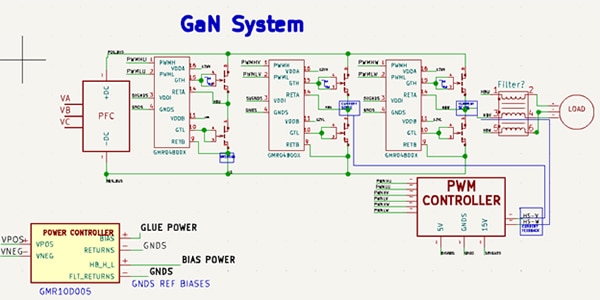 图 1a:工业高负载控制系统偏置和启动。(图片来源:Ganmar Technologies)
图 1a:工业高负载控制系统偏置和启动。(图片来源:Ganmar Technologies)
本部分将参照图 1a 中的框图,重点介绍偏置功率控制器的设计及其与整个系统的集成。我们将探讨每种功能的设计选项,但 PFC 和 PWM 控制器除外,因为需要更具体的系统接口要求信息才能全面探讨这些功能。因此,本文将不会详细介绍这两种元器件。文中假设系统采用高压 GaN 开关,如 Infineon 的GS66516T,但也会讨论其他替代开关技术(如 SiC 或双极开关)的考量。
此外,本文还将展示 Ganmar Technologies 高度集成的自供电浮栅驱动器模块,具体型号是 GMR04B00x。该型号中的“x”表示有多种双栅极驱动器芯片选项。有关详细规格和选项,请参阅 GMR04B00x 规格书。
偏置功率控制器
偏置功率控制器的设计可为低交流输入值 (UVLO) 提供掉电保护,并在交流输入超过最大设定限制 (OVLO) 时提供解锁关断。当交流输入处于安全工作值范围内时,GRM10Dx 模块会产生常用电压(通常为 6 V 和 22 V)下的隔离直流输出。在更大的系统中,可能需要其他电压制式。图 1b 显示了获得这些电压的典型配置。使用低功率 5 V 输出为 GMR04B00x 模块中的双栅极驱动器芯片供电,具体地是 Analog Devices 的 ADUM7223。有关其他可用选项,请参阅 GMR04B00x 规格书。
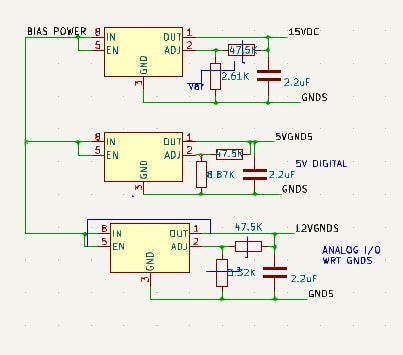 图 1b:源自 GMR10Dx 的典型胶连电路形式。(图片来源:Ganmar Technologies)
图 1b:源自 GMR10Dx 的典型胶连电路形式。(图片来源:Ganmar Technologies)
GMR04B00x 模块从内部为其浮置侧供电,以提供两个 12 V 偏压。高压侧 12 V (12VH) 偏置上电源开关的 VIA 输出驱动器,相对于 HBU 节点,栅极驱动电平为 +5.6 V/-5.6 V。在 V 相和 W 相电路周围也采用了类似的分路驱动配置。
对于低压侧开关,GMR04B00x 模块内部会产生一个单独的 12VL 电压,任何极性的低压侧功率返回节点都可以该电压为基准。例如,ADUM7223 的 VIB 输出被分路器网络分成 +5.6 V/-5.6 V 两路,确保下方 GaN 开关正常工作。
对于 SiC 开关,GMR04B00x 模块的不同版本可提供 15 V、18 V 或 22 V 电压,这些电压可以为出厂设置,以适应各种大功率 SiC 开关。相对于 HBU/V/W 上节点,分路电路输出提供 ±股浮动偏置,用于驱动高压侧和低压侧的碳化硅开关,对于任何极性的下节点也是如此。有关可用选项,请参阅 GMR04B00x 规格书。
偏置功率控制器部分,连同图 1b 中所示的 LDO,一起为直接连接到 V 节点和 W 节点处栅极的另外两个 GRM04B00x 接口模块供电。此外,22 V 输出还可通过 LDO 为用户电路板上的模拟控制器、数字部分和 I/O 芯片供电。如需更高功率,用户可查阅应用说明,获取有关并联 GMR10Dx 模块的指导。
启动问题
在数字处理器开始工作之前,为其提供稳定的电源至关重要。这就需要使用独立于 PFC 的电源使偏置控制器工作。Ganmar 电源转换器电路消耗的交流电源功率最多为 18 W,对交流输入相位关系的影响极小。GMR10DX 模块支持 100 VDC 至 320 VDC 的输入电压范围,涵盖离线应用的典型范围。
在大功率应用中,整流器可产生高达 380 V 的电压,对于此类应用中经常遇到的更高源电压,请咨询 Ganmar 技术支持,了解 GMR10Dx 系列中的其他选项。
图 2 展示了一个适于使用该模块启动系统的典型 6 二极管桥式整流器。一旦交流输入超过约 42 VRMS(60 Hz 或 400 Hz),导致带一个 10 µF 小电容器的电桥输出 200 VDC 电压,模块将开始产生输出,在低负载条件下最大延迟时间为 70 ms。这一延迟是可接受的,因为在启动过程中没有其他系统模块耗电。
在瞬态事件期间,如果交流输入导致 6 二极管桥式整流器输出超出转换器模块的安全工作范围,则模块将关断,直到整流电压恢复到安全水平。此外,如果整流电压降至 100 V 以下,则欠压掉电保护功能就会启动。
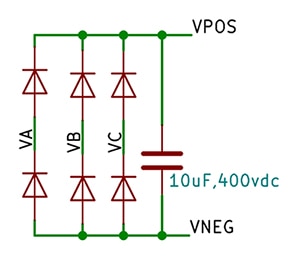 图 2:直接从交流输入中耗用最大 18 W 用于启动和偏置。(图片来源:Ganmar Technologies)
图 2:直接从交流输入中耗用最大 18 W 用于启动和偏置。(图片来源:Ganmar Technologies)
输入滤波
电源开关模块(如 GRM10Dx)对其输入电源具有“负”阻抗特性。这种特性使得有必要对滤波器进行精心设计,以确保接口的稳定性。输入滤波器的详细设计已在各种报告和出版物中作了广泛介绍,因此本文将简要概述 GRM10Dx 模块的输入特性。
对于 GaN 驱动的典型 15 W 恒功率负载,整流器电压为 200 V,效率为 0.85,等效阻抗按 |200²/(15/η)| 进行计算,其结果约为 3.14 kΩ。与源阻抗相比,该阻抗相对较高,这使得所需的滤波器更容易有效地对其实现旁路。但是,建议在 GRM10Dx 模块附近安装一个 10 µF/400 V 阻尼电容器。该模块本身包括一个 0.47 µF 电容器,用于处理内部开关事件产生的瞬时峰值电流。只要主 PFC 滤波器能提供足够的阻尼,外部电容器的等效串联电阻 (ESR) 额定值就并不重要。
Ganmar Technologies 还提供了一个传统的交流输入桥式整流器模块,该模块配有保险丝和 EMI 滤波器,以便于与 GRM10Dx 模块集成。这可简化连接交流电源的过程。有关集成该模块的详细信息,请咨询 Ganmar 技术支持。
驱动器偏置
图 3 和图 4 显示了 GMR10D000 模块的原理图和照片,该模块是一个隔离式 DC/DC 转换器,能够提供 15 W 双输出。VOUT1 通常在 3 W 时提供 6.5 V 电压,而 VOUT2 则在 12 W 时提供 22 V 电压。两个输出都可在 10 ms 内达到稳定状态。本部分将介绍如何将图 1 中所示的功能与 GMR10Dx 器件关联,以实现所需的功能和性能。
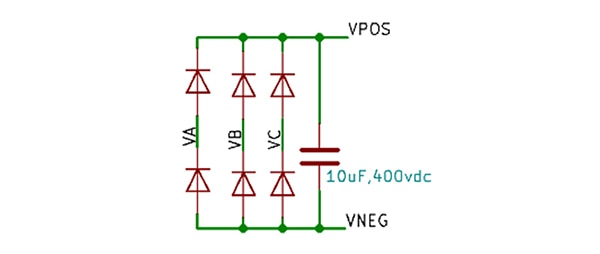 图 3:三相连接。(图片来源:Ganmar Technologies)
图 3:三相连接。(图片来源:Ganmar Technologies)
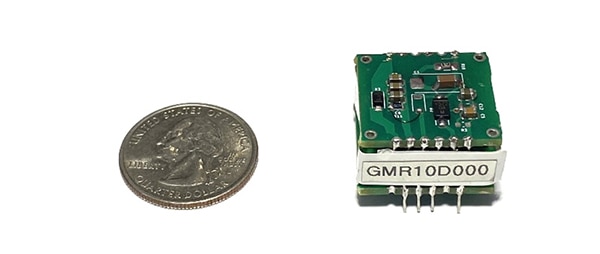 图 4:GMR10D000 模块。(图片来源:Ganmar Technologies)
图 4:GMR10D000 模块。(图片来源:Ganmar Technologies)
图 5 显示了多个 GMR10Dx 模块的模块互连,这种模块互连是为了实现偏置功率控制器的功能。本部分将详细说明采用 HS-U 构件情况下的 GMR04B008 应用。通过连接与各自节点对应的参考回波,可以轻松复制其他两个模块。
 图 5:模块驱动侧功能示意图(以 GMR10D005 为例示出)。(图片来源:Ganmar Technologies)
图 5:模块驱动侧功能示意图(以 GMR10D005 为例示出)。(图片来源:Ganmar Technologies)
图 6 展示了 22 V 电源与常用参考“接地”GND 节点的关系。
 图 6:GMR04B00x 内部原理图,带浮栅电源和直接驱动。(图片来源:Ganmar Technologies)
图 6:GMR04B00x 内部原理图,带浮栅电源和直接驱动。(图片来源:Ganmar Technologies)
功率级接口要求
如图 6 所示,在 GaN 系统中通常建议使用负偏置电压来关闭 GaN 功率器件,在电流超过 30 A 的硬开关拓扑结构中尤为如此。图 7 提供了演示这种方法的示意图(由 Infineon 网络研讨会提供)。
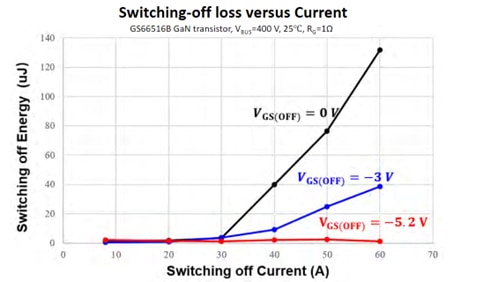 图 7:VEE 对关断动态的影响。(图片来源:Infineon)
图 7:VEE 对关断动态的影响。(图片来源:Infineon)
实现和导通/关断特性 - 该模块为 Infineon 器件实现了分路器,从而确保了高效的导通和关断电压,同时还最大限度减少了关断转换损耗。分路驱动波形和 Infineon 的 GS66xx 设计有助于提高效率,而独特的变压器设计则可降低 GS66xx 关断过程中的振铃峰值。
导通/关断
要实现完全导通,需要 5.6 V 栅极驱动,并尽量减少敏感开关节点和印制线之间的寄生电感和电容耦合。遵守 GaN 供应商关于正确放置和电路布线的指南至关重要。
关断期间,栅源电压 (VGS) 应明显低于阈值电压 (VTH),在本文讨论的电路中,基准电平约为 0 V。本文假定使用的是 Analog Devices 的 ADUM7223 栅极驱动器 IC。需要注意的是,该驱动器的输出欠压锁定 (UVLO) 电压为 5 V,因此适用于 GaN 器件所需的 5.6 V 栅极驱动。该 GaN 的功率耗散可通过驱动器的规格书计算得出:
![PD = (VDDI)(IDDI) + 2(IDDx) + (f)(Qg)(VDDx)[Rp/Rp+Rg] + (f)(VDDx)[Rn/Rn+Rg] + 2fCINT VDDx2 PD = (VDDI)(IDDI) + 2(IDDx) + (f)(Qg)(VDDx)[Rp/Rp+Rg] + (f)(VDDx)[Rn/Rn+Rg] + 2fCINT VDDx2](http://sc-c.digikeyassets.com/-/media/Images/Article%20Library/TechZone%20Articles/2024/November/Optimizing%20Power%20Controllers%20with%20GMR10Dx%20Modules%20for%20Multiphase%20Bias%20Solutions/article-2024november-optimizing-power-controllers-in-industrial-equation1.jpg?la=en&ts=6077042c-83cc-4d82-9a3c-3d78b5d49f10)
假设开关频率为 250 kHz,并采用以下数值,则可计算出 PD:
|
该驱动器配置的耗散功率为 100 mW,处于 GMR10Dx 和 GMR04B00x 模块的能力范围内。GMR10Dx 模块能够提供大幅超过驱动器需求的功率,从而确保为其工作提供稳定的电源。
用于驱动器的 HV GaN 设置
GMR10Dx 模块为半桥 (HB) 配置中的上下 GaN 驱动器提供必要的偏置电压。图 8 显示了分路器与 GaN 驱动器的连接。
要防止不稳定的开关行为和 GaN 器件的潜在损坏,正确参考偏置回波至关重要。用户应遵守特定 GaN 规格书和应用说明中提供的指南和建议,以确保器件能够正确且安全地工作。更多指南可参阅 GMR04Bx 双直接驱动器集成模块规格书的应用简介。
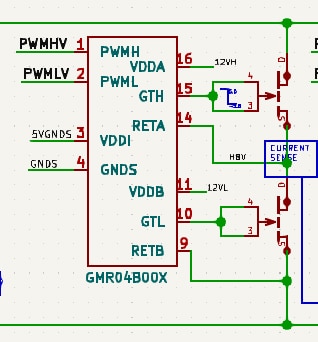 图 8:图腾柱排列和经典半桥配置,分路驱动直接连接到 GaN 开关。(图片来源:Ganmar Technologies)
图 8:图腾柱排列和经典半桥配置,分路驱动直接连接到 GaN 开关。(图片来源:Ganmar Technologies)
GMR04B00x 模块可为上 GaN 开关栅极驱动器提供必要的浮动偏置电压,从而无需额外的电路(如用于产生所需偏置电压的飞控自举电容器)。
借助 GMR04B00x 模块,浮栅驱动电压可直接连接到上下 GaN 开关的栅极,从而提供稳定的 ±5.6 V 栅极驱动。这种方法简化了设计,因为控制器无需通过开关下器件来为上栅极驱动器产生偏置。
使用 GMR04B00x 模块可使上下 GaN 开关达到所需的栅极驱动电压,因此无需增加替代偏置方法所需的额外元器件,也避免了采用替代偏置方法带来的复杂性。
图 9 中所示的传统自举方案有几个缺点,其中包括需要二极管和非极性电容器等额外元器件,这些元器件的值可能需要根据 GaN 或其他器件的具体要求进行调整。启动问题和缺乏强劲偏置是采用这种方法要考虑的重要问题。此外,传统的自举方案还与双极 HB 节点不兼容。
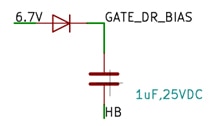 图 9:传统浮栅驱动器偏置方案。(图片来源:Ganmar Technologies)
图 9:传统浮栅驱动器偏置方案。(图片来源:Ganmar Technologies)
相比之下,GMR10Dx 和 GMR04B00x 模块及其相关扩展件布局紧凑,节省空间的优势非常明显。因此,对于需要高效偏置和正确参考的应用,这些模块是实用的解决方案。
电流检测
图 10 和图 11 显示了如何通过将并联电阻与 GMR10Dx 和 GMR04B00x 模块结合使用实现电流检测功能的集成。并联电阻通常用于测量和监测流经电路的电流。将这些电阻巧妙地放置在电流路径中,就可以测量它们两端的压降,从而计算出电流。
在采用 GMR 模块的情况下,电流检测并联电阻与负载或高带宽隔离电流检测模块串联连接。这种设置可确保准确的电流检测和监测。GMR 模块提供必要的浮动或接地参考偏置电压和电源,以为电流检测系统提供支持,从而确保测量可靠且精确。
在系统设计中加入电流检测功能不仅使用户能够收集有关电流值的宝贵信息,而且还能监测电路或系统性能。这在需要实现精确电流控制或保护的应用中尤为有用,如电机控制、电力电子或可再生能源系统。
 图 10:传统并联电阻电流检测。(图片来源:Ganmar Technologies)
图 10:传统并联电阻电流检测。(图片来源:Ganmar Technologies)
 图 11:GMRCS000 非耗散电流检测。(图片来源:Ganmar Technologies)
图 11:GMRCS000 非耗散电流检测。(图片来源:Ganmar Technologies)
Ganmar Technologies 提供的 GMRCSN000 和 GMRCSP000 模块是紧凑型隔离式非耗散电流传感器解决方案。这些模块提供高带宽隔离式电流检测功能,无需在电流路径中增加并联电阻。这样可消除功率损耗,简化设计。
GMRCSN000 和 GMRCSP000 模块可检测流经电路的电流,并提供两种输出极性:0 至 +Vsense 和 -Vsense 至 0。上述输出适合与嵌入式控制器的 ADC(模数转换器)直接连接,并且适用于无桥 PFC 应用中使用的模拟控制器。
利用 GMRCSN000 或 GMRCSP000 模块可简化电流检测的实现过程,节省宝贵的电路板空间,并确保实现准确的隔离式电流测量。有关这些模块及其适用零件编号的更多信息,请联系 Ganmar Technologies 的技术支持,以获得具体的帮助和集成指导。
结语
本文详细介绍了通过将 GMR10Dx 和 GMR04B00x 模块与高电压、大功率 GaN 开关结合使用实现系统启动和偏置的综合设计方法。重点关注的是 Infineon 的 GaN 开关,这种开关通常用于三相电机、三相逆变器和三级电动汽车充电器等应用。
与传统方法相比,这种设计方法具有多种优势,其中包括更高的可靠性、紧凑性和效率。GMR10Dx 和 GMR04B00x 模块为系统启动和偏置提供了一个通用且强大的解决方案,可直接连接到这些开关的栅极。
此外,本文还介绍了 GMRCSN000 和 GMRCSP000 模块,这些模块提供了一种紧凑、非耗散且具有灵活输出功能的电流检测解决方案。不仅可简化电流检测的实现过程,而且提供准确的隔离式电流测量。
对于有兴趣使用 Ganmar Technologies 元器件来实现这些设计的客户,我们提供与 KiCad 兼容的 Altium 格式的原理图、BOM 和布局(如适用)。有关进一步讨论、询价和供货情况,请联系 Ganmar Technologies 的技术支持或销售团队。
利用本文介绍的设计方法和解决方案,设计人员能够显著提高使用 GaN 开关的系统的性能和可靠性。此外,他们还可以从 Ganmar Technologies 提供的专业知识和支持中受益。
免责声明:各个作者和/或论坛参与者在本网站发表的观点、看法和意见不代表 DigiKey 的观点、看法和意见,也不代表 DigiKey 官方政策。





